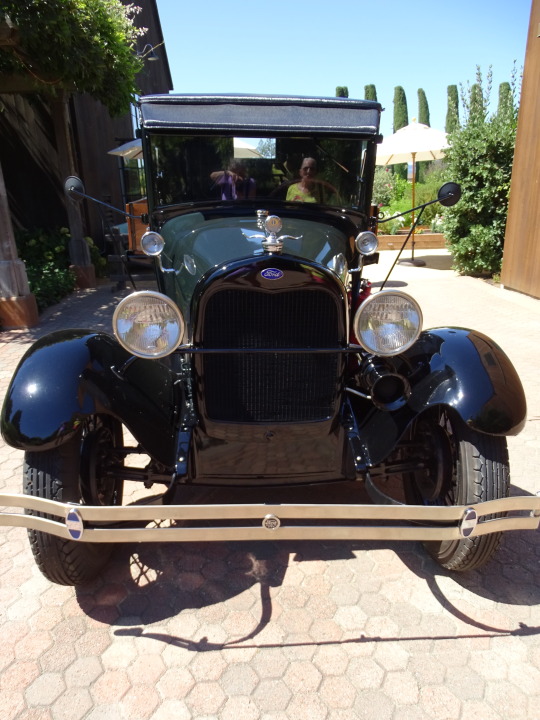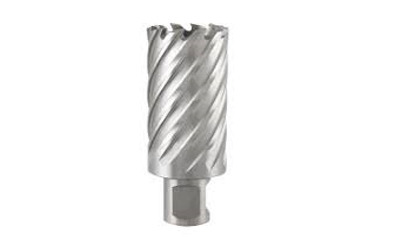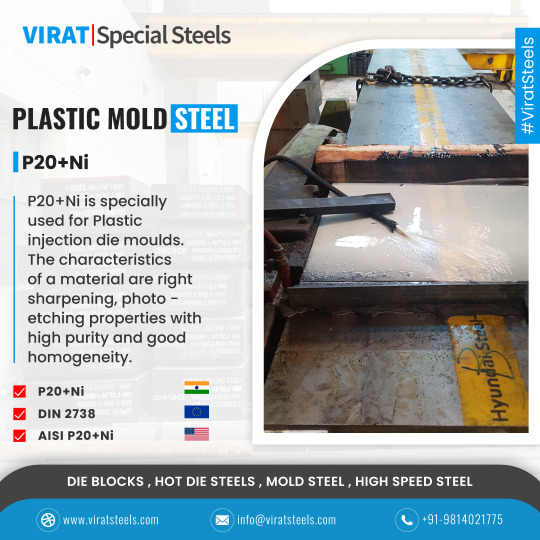#Automotive Core Tools
Explore tagged Tumblr posts
Text
What Are Automotive Core Tools - Importance Of Automotive Core Tools
Automotive Core Tools Overview
Today, Automobile Manufacturing organizations are working in a cut-throat market scenario where simultaneous improvement and an effective Quality Management System ensure success. Keeping this in mind, Automotive Core Tools were created.
These quality methods and tools were developed more than 30 years ago by the AIAG (Automotive Industry Action Group) and ASQ (American Society of Quality), in association with the automakers Ford, GM, and Chrysler (now FCA), to improve the efficiency of the IATF 16949-based QMS and deliver high-quality products on schedule.
According to the current standards of the automotive sector, these quality methods, which are based on IATF 16949, aid employees in optimizing processes and are essential for an efficient quality management system.
What are the Automotive Core Tools?
The five primary approaches manufacturers and supply chains use to manage quality control are called automotive core tools. They help suppliers and manufacturers adhere to IATF 16949 Automotive Quality Management System. Despite the IATF 16949 compliance obligations, organizations can still benefit from automotive quality tools. Manufacturers’ use of quality tools facilitates the detection of flaws, efficient product planning, monitoring of the development processes, and application of product quality planning. Following are the five core tools.
Advanced Product Quality Planning (APQP)
Failure Mode and Effects Analysis (FMEA)
Measurement Systems Analysis (MSA)
Statistical Process Control (SPC)
Product Part Approval Process (PPAP)
Let’s understand each tool in detail and understand how to use them.
Advanced Product Quality Planning (APQP): Advanced Product Quality Planning (APQP) and Control Plan aims to reduce the complexity of product quality plans. It is a structured method of signifying and establishing the process and steps required to ensure product quality standards and customer satisfaction. APQP allows customers to easily communicate their product quality planning requirements to their suppliers, thus reducing the complexity of product quality planning for both. With this, suppliers get a clear picture of the basic industry requirements for achieving part approval from their customers. Control Plans summarize the identified process and product parameters required to maintain product conformity. These tools are applicable throughout the supply base in all customer/supplier relationships. APQP defines the required inputs and outputs of each stage of the product development process.
Failure Mode and Effects Analysis (FMEA): Failure Mode and Effects Analysis (FMEA) identifies and addresses failure modes in products and processes. It is an analytical methodology to ensure that issues are identified and addressed throughout the product and process development process. It is an essential part of automotive core tools that encompasses risk assessment as a part of its evaluation. The analysis is conducted regarding the designs (of either the product or process), and the functions are reviewed thoroughly. Eventually, it aims at reducing the risk of potential failure. It is used before developing a control plan for a new or modified process while improving goals planned over the existing process, product or service and when the failures are analyzed about the existing process.
Measurement Systems Analysis (MSA): MSA stands for Measurement System Analysis. It is the measurement data that monitors nearly every process. It is a collection of many statistical analysis methods for evaluating variability in the measurement process. This is a significant part of automotive core tools as it helps improve data quality and decision-making. It is a guide that helps organizations assess the quality of their measurement systems by identifying improvement areas. It eventually provides knowledge based on data that can be used to improve the measurement process, improving repeatable product quality.
Statistical Process Control (SPC): Statistical Process Control (SPC) describes several basic and advanced statistical methods to ensure your process improvements are more effective. Statistical techniques such as controlling charts are utilized to analyze a process or its output. It helps take appropriate actions to achieve and maintain a state of statistical control and improve the process capability. It helps in controlling quality by closely monitoring the manufacturing process. Further, it provides solid ground for organizations to move from detection based to prevention-based quality controls.
Product Part Approval Process (PPAP): The production Part Approval Process (PPAP) is the only industry standard that ensures engineering design and product specification requirements are met without hindrance. It provides a guideline through which suppliers and customers understand the requirements to obtain part approval for supplier-manufactured parts. It applies to all parts and commodities. Further, it reduces delays and non-conformances during part approval. It addresses details pertinent to design records to ensure traceability of part design status at origin, and controls the predict a process change process, thus providing an approval outlet for all changes to ensure conformance for the next level assembly.
What data can be deduced from Automotive Core Tools?
The New Product Introduction (NPI) phases of product and process development, as well as specific situations such as experienced failures or technical changes, involve the usage of the Quality Core Tools. An analyst can deduce the following after reviewing the Quality Core Tools:
APQP provides time and advice for all actions and tools involved in product and process prevention and control, including the remaining Quality Core Tools. It includes requirements, specifications, reliability/design goals, preliminary special features, and scheduling.
The design FMEA risk assessment provides fine-tuned specific characteristics, testing inputs, and design enhancements. Process FMEA Risk Assessment considers potential process flaws, enhanced process performance, and management techniques for unique characteristics.
MSA certifies the gauge systems used for unique characteristic measurements, which is essential for correctly identifying product quality defects.
SPC illustrates process capability and stability for unique characteristics derived by DFMEA and PFMEA in the first place.
The PPAP shows that all special features have developed unique controls or reached a degree of stability and capability (Cpk) that is acceptable.
Why Automotive Core Tools are important?
The cost of poor quality (COPQ), measured in the manufacturing sector, is the expense related to processing and product failures. Compared to the industry leaders, subpar manufacturers are 5X more likely to incur expenditures related to scrap, rework, defects, retesting, and recalls.
The best manufacturers have COPQ scores of under 1%, while subpar manufacturers have scores of 5% or more. Therefore, by addressing issues, particularly fatal errors, before they become significant problems after a product has been published, the 5 Core Quality tools preventively minimize COPQ. Improved consumer and supplier communication and comprehension help achieve this.
#Automotive Core Tools#What Are Automotive Core Tools#What is Automotive Core Tools#Automotive Core Tools are important#importance Of Automotive Core Tools
2 notes
·
View notes
Text

1 note
·
View note
Text
5 Automotive Core Tools Certification: A Case Study of Success
The "5 Automotive Core Tools Certification" refers to a set of quality management tools and methodologies that are essential in the automotive industry to ensure the production of high-quality vehicles and components. These core tools are widely used to manage processes and ensure consistency and reliability in automotive manufacturing. Companies often seek certification in these core tools to demonstrate their commitment to quality and to meet industry standards.

Here are the 5 Automotive Core Tools:
Advanced Product Quality Planning (APQP): APQP is a structured process for developing new automotive products and processes. It ensures that potential risks are identified and mitigated early in the product development cycle.
Production Part Approval Process (PPAP): PPAP is a standardized process for approving and validating production processes. Suppliers provide evidence that their processes are capable of consistently producing parts that meet the required specifications.
Failure Mode and Effects Analysis (FMEA): FMEA is a systematic approach for identifying and addressing potential failure modes in a product or process. It helps prioritize and address the most critical risks to quality and safety.
Measurement System Analysis (MSA): MSA assesses the reliability and accuracy of measurement systems used in manufacturing processes. It ensures that measurements taken during production are trustworthy and consistent.
Statistical Process Control (SPC): SPC involves monitoring and controlling the production process using statistical methods. It helps identify and address variations in the process, ensuring consistent quality.
#5 Automotive Core Tools#Automotive#iatf 16949#iatf 16949 certification#iatf 16949 2016#iatf 16949 standard#iatf 16949 training
0 notes
Text
I think 'degrowth' as a rhetoric is flawed, because it fails to correspond with the direction that sustainable development must take on the local scale - a massive increase in technological advancement and deployment, such that inefficient techniques forced into continuance by impoverishment can be phased out and overcome. Peasants living alongside a polluted river and subsisting off drought-withered, runoff-poisoned crops do not need 'degrowth', not even upstream - they need agricultural price controls, mechanisation, and advanced scientific institions that can make decontamination and reclamation possible. The vast majority of the world needs (and rightfully expects) their liberation to come with an upsurge of political, economic, technological, and scientific growth. The imperial core, where this rhetoric apparently finds its niche, will not be let off the hook - your automotive plants cannot simply be destroyed, the technology and expertise they sequester would be the lifeblood of millions, if and when they are re-tooled to manufacture tractors and trolleybusses. We must redirect and channel the growth and progress of human society, not attempt to hinder or reverse it - reaction in the strictest sense.
581 notes
·
View notes
Text









Model T Day
Model T Day is a lively celebration of the iconic car that changed the way Americans traveled. This day is all about honoring the Model T, which was the first mass-produced automobile that made car travel affordable for many people.
The Model T, introduced by Henry Ford, symbolizes innovation and the start of modern personal transportation.
It’s a day to appreciate how this car transformed society by making it easier for families to own a vehicle and travel freely.
The significance of Model T Day lies in its celebration of technological progress and affordability in automotive history.
Henry Ford’s introduction of the moving assembly line revolutionized car manufacturing, significantly lowering costs and making cars accessible to the average American.
This shift not only boosted the economy but also changed everyday life, allowing people to travel farther and faster than ever before. Celebrating Model T Day reminds us of these advancements and the impact of innovation on our daily lives.
Model T Day also inspires inventors and innovators, encouraging them to pursue their dreams and make lasting impacts on the world.
Additionally, it fosters a sense of nostalgia and appreciation for historical advancements, highlighting how far technology has come and its role in shaping the modern world.
History of Model T Day
Model T Day started as a way to honor the revolutionary car created by Henry Ford. This day was first celebrated to recognize the impact of the Model T on society and transportation.
It officially began in the early 2000s, initiated by automotive enthusiasts and historical societies. They wanted to highlight the importance of this vehicle in American history.
The celebration acknowledges how the Model T made car ownership possible for many people. Before its introduction, cars were a luxury few could afford.
The Model T’s affordability and Ford’s innovative assembly line changed that, allowing millions of Americans to own a car. This shift played a significant role in shaping modern transportation and industry.
Henry Ford’s vision and dedication to making cars accessible to everyone is a core reason for this celebration.
The Model T wasn’t just a car; it was a symbol of innovation and progress. Celebrating Model T Day reminds us of the transformative power of technology and the importance of making advancements that benefit everyone.
How to Celebrate Model T Day
Host a Vintage Car Parade
Picture a parade, but instead of floats, imagine vintage cars! Enthusiasts can line up their cherished Model Ts and drive them through town.
Neighbors will cheer, and cameras will click as these historic vehicles roll by, showcasing their charm and elegance.
Organize a Model T Quiz Night
Quizzes aren’t just for pubs! Gather friends and family for a fun-filled trivia night focused on the Model T. Prepare questions about its history, fun facts, and quirky details.
The winner gets bragging rights as the ultimate Model T expert!
Plan a Picnic with a Twist
Pack a picnic and head to a local park, but with a twist – everyone dresses in early 1900s attire! Enjoy sandwiches, lemonade, and a game of horseshoes.
Bonus points for anyone who arrives in a Model T, of course!
Create a DIY Workshop
Turn your garage into a Model T workshop for the day. Invite friends to learn about basic car maintenance, especially those with vintage car models.
Share tips, tools, and tales while tinkering with your beloved automobiles.
Film Screening Under the Stars
Host an outdoor movie night featuring documentaries or films about the Model T and Henry Ford. Lay out blankets, set up a projector, and enjoy learning about automotive history under the stars. Popcorn is a must!
Teach the Young Ones
Share the Model T magic with kids and teens. Organize a storytelling session about how the Model T changed the world.
Use photos, videos, and even toy models to make history come alive for the younger generation.
Visit a Local Museum
Plan a trip to a nearby car museum. Many museums feature classic cars, including the Model T. Walking among these historic vehicles provides a tangible connection to the past and inspires appreciation for automotive innovation.
Decorate Your Model T
If you own a Model T, get creative! Decorate it with period-appropriate accessories like old luggage, picnic baskets, and vintage clothing.
Then, take it for a spin around the neighborhood to share your creation with everyone.
Source
#Turnbull Wine Cellars#Oakville#Beringer Vineyards#St Helena#Napa Valley#California#summer 2024#travel#original photography#vacation#tourist attraction#landmark#cityscape#Bay Area#West Coast#2023#old car#technology#engineering#Model T Day#1 October#USA#ModelTDay
2 notes
·
View notes
Text
CADOpt Technologies: Premium PTC Partner & Top Value-Added Reseller In India

In the fast-evolving landscape of digital design and engineering, having a reliable partner for computer-aided design (CAD) solutions is crucial. CADOpt Technologies has emerged as a beacon of excellence in this domain, establishing itself as a premium PTC partner and one of the top value-added resellers in India. This article delves into the myriad ways CADOpt Technologies stands out, offering insights into their services, solutions, and customer-centric approach.
Comprehensive Solutions Offered by CADOpt Technologies
CAD Software Solutions
One of the core offerings of CADOpt Technologies is their suite of CAD software solutions. These tools are designed to enhance productivity, improve design accuracy, and streamline the engineering process. Some of the key software solutions provided include:
Creo: A robust 3D CAD software that supports product design and development from concept to manufacturing.
Windchill: A product lifecycle management (PLM) solution that facilitates collaboration and data management across the product development lifecycle.
ThingWorx: An industrial Internet of Things (IoT) platform that enables smart, connected operations and products.
Training and Support Services
Understanding that software is only as good as the people using it, CADOpt Technologies places a strong emphasis on training and support. They offer comprehensive training programs tailored to different user levels, ensuring that clients can fully harness the power of their CAD tools. Additionally, their dedicated support team is always on hand to assist with any technical issues, providing timely and effective solutions.
Customization and Integration
Every business has unique needs, and CADOpt Technologies excels in offering customized solutions. They work closely with clients to understand their specific requirements and tailor their CAD tools accordingly. Moreover, their expertise in software integration ensures seamless incorporation of CAD solutions into existing workflows, enhancing overall efficiency.
Why CADOpt Technologies is a Top Value-Added Reseller
Industry Expertise
One of the key factors that set CADOpt Technologies apart is their deep industry expertise. They have a team of seasoned professionals with extensive experience in various sectors, including automotive, aerospace, consumer goods, and industrial equipment. This diverse expertise enables them to provide insights and solutions that are precisely aligned with industry-specific challenges and opportunities.
Customer-Centric Approach
At the heart of CADOpt Technologies' success is their unwavering commitment to customer satisfaction. They adopt a consultative approach, working closely with clients to understand their goals and challenges. This collaborative mindset ensures that the solutions provided are not only effective but also add significant value to the client's business.
Strong After-Sales Support
After-sales support is a critical aspect of any technology partnership, and CADOpt Technologies excels in this regard. Their dedicated support team provides ongoing assistance, ensuring that clients can maximize the benefits of their CAD solutions. From troubleshooting technical issues to providing regular updates and maintenance, CADOpt Technologies is committed to long-term client success.
The Future of CADOpt Technologies
Innovation and Growth
Looking ahead, CADOpt Technologies is poised for continued growth and innovation. They are constantly exploring new technologies and trends to stay ahead of the curve. Their ongoing investment in research and development ensures that they can offer cutting-edge solutions that meet the evolving needs of their clients.
Expansion Plans
CADOpt Technologies has ambitious plans for expansion, both geographically and in terms of service offerings. They aim to extend their footprint across India and beyond, bringing their world-class CAD solutions to a broader audience. Additionally, they are exploring new verticals and industries, leveraging their expertise to drive digital transformation in various sectors.
Conclusion
CADOpt Technologies stands out as a premium PTC partner and top value-added reseller in India, thanks to their innovative solutions, exceptional customer service, and deep industry expertise. Their comprehensive suite of CAD software, coupled with their commitment to customization, training, and support, makes them a trusted partner for businesses seeking to enhance their design and engineering capabilities. As they continue to grow and innovate, CADOpt Technologies is set to play a pivotal role in shaping the future of the CAD industry in India and beyond. For more information on CADOpt Technologies and their offerings, visit their official website or contact their support team for personalized assistance.
#CADOptTechnologies#PTCPartner#CADSolutions#ValueAddedReseller#IndiaTech#CreoSoftware#WindchillPLM#ThingWorxIoT#EngineeringExcellence#DigitalTransformation#TechInnovation#CustomerSupport#CADTraining#IndustryExpertise#ProductDesign#EngineeringSoftware#CADIntegration#TechGrowth#InnovationInCAD#FutureOfDesign#TechResellerIndia
2 notes
·
View notes
Text
Precision and Efficiency in CNC Metal Cutting with Fuson Precision Machining
In modern manufacturing, achieving precision and efficiency is critical to producing high-quality components. CNC metal cutting is a pivotal process that allows industries to create intricate metal parts with exceptional accuracy. Fuson Precision Machining is at the forefront of providing superior CNC metal cutting services. In this blog, we will explore the importance of CNC metal cutting, the benefits it offers, and why Fuson Precision Machining should be your go-to choice for this essential service.
Understanding CNC Metal Cutting
CNC (Computer Numerical Control) metal cutting is a manufacturing process that uses computer-controlled machines to remove material from a metal workpiece, creating precise shapes and designs. The process involves programming the desired dimensions into the CNC machine, which then guides cutting tools to perform precise cuts on the metal. This method ensures high levels of accuracy, repeatability, and efficiency, making it ideal for producing complex metal parts.
The Importance of CNC Metal Cutting
1. Precision and Accuracy
One of the key advantages of CNC metal cutting is its ability to achieve extremely tight tolerances. This precision is crucial in industries such as aerospace, automotive, and medical, where even the slightest deviation can lead to significant issues. With CNC metal cutting, manufacturers can produce parts that meet exact specifications, ensuring the highest levels of quality and reliability.

2. Efficiency and Productivity
CNC metal cutting is highly efficient, allowing for rapid production of metal components. The automation of the process reduces the need for manual intervention, minimizing errors and increasing productivity. This efficiency translates into faster turnaround times and cost savings for manufacturers, making CNC metal cutting an essential part of modern production.
3. Versatility
CNC metal cutting is versatile and can handle a wide range of metals, including steel, aluminum, brass, and titanium. This flexibility makes it suitable for producing a variety of components, from simple parts to complex geometries. Whether you need prototypes or high-volume production, CNC metal cutting can accommodate your needs.
Benefits of Choosing Fuson Precision Machining for CNC Metal Cutting
1. Expertise and Experience
Fuson Precision Machining boasts extensive experience and expertise in the field of CNC metal cutting. Our skilled technicians and engineers are proficient in handling complex projects and delivering precise metal components that meet the highest standards of quality. With years of industry experience, we understand the nuances of CNC machining and are equipped to tackle any challenge.
2. State-of-the-Art Equipment
We invest in state-of-the-art CNC machines and technology to ensure the best results for our clients. Our advanced equipment enables us to produce CNC metal cutting components with unparalleled accuracy and consistency. By leveraging cutting-edge technology, we can handle intricate designs and tight tolerances with ease.
3. Quality Assurance
Quality is at the core of everything we do at Fuson Precision Machining. We adhere to stringent quality control processes to ensure that every CNC metal cutting component meets or exceeds client expectations. Our commitment to quality is reflected in our ISO certification and our reputation for delivering reliable and precise metal parts.
4. Custom Solutions
We understand that each project is unique, and we offer customized solutions to meet specific requirements. Whether you need specialized materials, unique geometries, or specific finishes, we work closely with you to deliver CNC metal cutting components tailored to your needs. Our collaborative approach ensures that we provide solutions that align perfectly with your objectives.
Applications of CNC Metal Cutting
1. Aerospace Industry
In the aerospace industry, precision is critical. CNC metal cutting is used to produce components such as engine parts, landing gear components, and structural elements. The accuracy and reliability of these parts are essential for ensuring the safety and performance of aircraft.
2. Automotive Industry
The automotive industry relies on CNC metal cutting for the production of engine components, transmission parts, and various other critical elements. CNC metal cutting ensures that these parts meet the stringent standards required for vehicle performance and safety.
3. Medical Industry
In the medical field, CNC metal cutting is used to manufacture components for medical devices, implants, and surgical instruments. The precision and biocompatibility of these parts are vital for patient safety and effective medical treatment.
4. Electronics Industry
The electronics industry uses CNC metal cutting to create components for devices such as connectors, housings, and heat sinks. The ability to produce small, intricate parts with high precision is crucial for the functionality and reliability of electronic devices.
Success Stories: Fuson Precision Machining in Action
Client A: Aerospace Component Manufacturer
A leading aerospace component manufacturer turned to Fuson Precision Machining for the production of high-precision engine parts. Our expertise in CNC metal cutting enabled us to deliver components that met the stringent tolerances and quality standards required. The success of this project solidified our reputation as a reliable partner in the aerospace industry.
Client B: Medical Device Company
A medical device company required custom components for a new surgical instrument. Fuson Precision Machining provided tailored solutions, delivering precise CNC metal cutting components that ensured the instrument’s functionality and biocompatibility. Our collaborative approach and commitment to quality played a key role in the successful launch of the product.
Conclusion: Partner with Fuson Precision Machining for Superior CNC Metal Cutting
CNC metal cutting is essential for achieving precision, efficiency, and versatility in manufacturing. Fuson Precision Machining offers unparalleled expertise, state-of-the-art equipment, and a commitment to quality, making us the ideal partner for all your CNC metal cutting needs. Whether you operate in aerospace, automotive, medical, or electronics industries, we provide customized solutions that meet your specific requirements.
Contact Fuson Precision Machining today to learn more about our CNC metal cutting services and discover how we can help you achieve your manufacturing goals with precision and efficiency.
#CNC Metal Cutting#cnc metal fabrication#cnc metal process#CNC Work#prototype machining#cnc machining prototype
2 notes
·
View notes
Text
Core drill supplier in Dubai:-
All types of heavy-duty and lightweight pliers are available at Aatco Dubai. Your request can be satisfied whether you're looking for felo smart engineer tool set suppliers in Dubai or any other top brand. The employment of diverse precision tool types can be seen, for instance, in the United States and Europe's medical, automotive, aerospace, and defence industries. For more info: https://www.aatcodubai.com/core-drill-/82

#vde diagonal nippers suppliers in dubai#nose plier suppliers in dubai#core drill supplier in dubai#hss tap set supplier in dubai#pneumatic grinder suppliers in dubai
2 notes
·
View notes
Text
WIDMA's Proficiency in Hole Drilling and Horizontal Machining Centers: A Comprehensive Approach to Precision Machining
Offering state-of-the-art solutions for hole drilling and horizontal machining centers (HMCs), WIDMA stands out as a trailblazer in the fast-paced world of precision machining, where accuracy and innovation are paramount.
With a history stretching back to 1984, WIDMA has developed into a world leader in machine tool construction, offering unparalleled knowledge in machining operations.
Excellence in Hole Drilling Machines
WIDMA's selection of hole-drilling machines amply demonstrates its dedication to quality. With a focus on deep-hole drilling, WIDMA's equipment is designed to redefine efficiency and precision. The highly regarded gun drill machine, a symbol of technological advancement in the industry, is one of its flagship products.
Gun Drilling Machine: Accuracy Unlocked
A revolution in deep hole drilling is represented by WIDMA's gun drill machine. This machine is engineered to be incredibly accurate in drilling applications, with precision at its core. The gun drill machine from WIDMA is a dependable and high-performing solution for any industry that requires intricate hole drilling, be it automotive components, aerospace structures, or any other.
The following are the main attributes of WIDMA's gun drill machine:
1. Accuracy Redefined: The gun drill machine guarantees the highest level of precision in hole drilling applications by achieving tolerances that surpass industry standards.
2. Adaptability: The machine is versatile and can be designed for a variety of industries. It can work with a broad range of materials and component geometries.
3. Efficiency: WIDMA's gun drill machine optimizes the manufacturing process, increasing overall efficiency, with rapid drilling capabilities and minimal downtime.
4. Trustworthiness: Constructed with durable materials and cutting-edge engineering, the machine ensures dependability and longevity even in the most severe machining conditions.
Horizontal Machining Centre: Creating the Machining Landscape of the Future
Horizontal Machining Centers are essential in the context of Industry 4.0, which is redefining manufacturing landscapes through automation and connectivity. WIDMA's experience flows naturally into the field of HMCs, providing solutions that raise the bar for accuracy and efficiency.
Redefining Accuracy in Horizontal Machining
The horizontal machining centers from WIDMA are made to fit the changing needs of contemporary machining. These centers are excellent at everything from complex component manufacturing to high-precision milling.
The following characteristics set WIDMA's HMCs apart:
1. Adaptability: WIDMA's HMCs meet a wide range of machining needs, from small, complex parts to large-scale components.
2. Machining at High Speed: These machining centres redefine rapid machining with their engineering that balances speed and accuracy.
3. Automation Integration: WIDMA's HMCs easily interface with automation systems, improving workflow efficiency, in keeping with Industry 4.0 principles.
4. Reliability: Constructed with an emphasis on longevity and dependability, these machining centres guarantee steady performance even in the most exacting production settings.
WIDMA: Developing Precision Machining's Future
The precision of a gun drill machine or the adaptability of horizontal machining centers are just two examples of how WIDMA's solutions are more than just goods; they are a reflection of a history founded on knowledge and creativity.
WIDMA is synonymous with precision, reshaping the future of machining one drill at a time in a field where every cut counts.
2 notes
·
View notes
Text
Shaping the Road Ahead: 30 kW Lasers in Automotive Innovation

In recent years, 30 kW fiber laser cutting machines have emerged as a revolutionary technology in the automotive manufacturing industry. These machines utilize advanced fiber laser technology to achieve high-power cutting capabilities, enabling precise and efficient fabrication of automotive components. The impact of these machines on the industry has been profound, leading to improved productivity, cost-saving benefits, and enhanced customization opportunities.
Understanding Fiber Laser Cutting Machines
Fiber laser cutting machines are state-of-the-art tools that use fiber lasers to cut through various materials, including metals, with remarkable precision. The core of these machines is the fiber laser source, which generates an intense laser beam guided through an optical fiber. This highly focused and coherent laser beam is then directed onto the material to be cut, melting and vaporizing it with exceptional accuracy.
Advantages of fiber laser cutting machines over traditional cutting methods are numerous. Firstly, they offer higher cutting speeds and increased productivity, making them ideal for mass production in the automotive industry. Secondly, fiber lasers consume significantly less energy compared to CO2 lasers, reducing operating costs and environmental impact. Additionally, these machines are known for their excellent beam quality, resulting in smooth, burr-free cuts and minimizing post-processing requirements.
The key components of a fiber laser cutting machine include the laser source, optical fiber, cutting head, and CNC (Computer Numerical Control) system. The CNC system allows for precise control of the cutting process, ensuring accurate and repeatable results. The machine's software plays a crucial role in generating cutting patterns and nesting layouts to optimize material usage and minimize waste.
Transformation
The adoption of 30 kW fiber laser cutting machines has brought about a transformative impact on automotive manufacturing processes. One of the most significant advantages is the improved precision and speed of cutting operations. These machines can cut complex shapes and intricate patterns with unparalleled accuracy, leading to tighter tolerances and higher quality components. The enhanced speed allows for faster production cycles, reducing lead times and increasing overall manufacturing efficiency.
Moreover, fiber laser cutting machines offer exceptional versatility, capable of cutting a wide range of materials used in automotive manufacturing. From steel and aluminum to composites and plastics, these machines can handle various automotive-grade materials with ease, expanding the possibilities for design and innovation.
youtube
Benefits for Automotive Manufacturers
The utilization of 30 kW fiber laser cutting machines provides several compelling benefits for automotive manufacturers. One of the most notable advantages is cost-saving. Due to their high cutting speeds and reduced energy consumption, these machines lead to lower production costs, making them cost-effective for large-scale manufacturing.
Furthermore, fiber laser cutting machines result in minimal material waste. Their precise cutting abilities allow for optimized nesting layouts, maximizing material utilization and minimizing scrap. This reduction in waste not only saves costs but also contributes to a more sustainable and environmentally-friendly manufacturing process.
Another advantage is the level of customization and flexibility these machines offer. With their ability to cut intricate shapes and patterns, automotive manufacturers can cater to customer demands more effectively. Additionally, the adaptability of these machines enables rapid prototyping and quick design iterations, accelerating the product development cycle.
Several leading automotive manufacturers have successfully implemented 30 kW fiber laser cutting machines in their production processes. Hyundai Motor Company for instance, increased their production output by 40% after integrating fiber laser cutting machines into their assembly line. This efficiency gain allowed them to meet rising market demands while maintaining high product quality.
Another example is Volkswagen Group, which achieved significant cost savings by minimizing material waste through precise cutting patterns generated by fiber laser cutting machines. This reduced their overall material expenses and made their operations more sustainable.
In conclusion, 30 kW fiber laser cutting machines have revolutionized automotive manufacturing, offering increased precision, speed, and material versatility. These machines are driving the industry towards enhanced productivity, cost-effectiveness, and customization opportunities, making them a pivotal technology for automotive manufacturers in the 21st century.
2 notes
·
View notes
Photo

Are you looking for PLASTIC MOULD STEEL steel ? DIN 2738 Plastic Mold Steel, The equivalent grade P20+Ni | DIN 2738 | AISI P20+Ni
DIN 2738 which is applicable for large & small plastic mold dies for Automotive Industries, Dies for Domestic goods , High finishing plastic Die, Boaster Plates of Presses, Die Holders & Shoe blocks for drop Hammers, Press Cassettes , Up setter Blocker, forging dies, Different dies & mold for plastic products etc.
Although less expensive options such as Aluminum exist for making molds to be used for shaping plastic, steel is most often the optimum one. It may be impose more investment to begin with but this is offset by its undoubtedly greater operational life and better finish. Also the specialized steels that have been created for plastic molding make for rapid process speed – for any duration it can handle more repetitions than other materials and so enhance productivity.
Steel properties as given below, however, have to be optimally matched to the specific application and these are:
- Degree of purity - Polishability - Uniformity of hardness and microstructure - Wear resistance - Temperature resistance - Machinability - Toughness and hardness - Thermal conductivity
DIN 1.2738 Steels are low Carbon consisting of Carbon between 0.35 to 0.45%
As #ViratSpecialSteels inform us, DIN 1.2738 tool steel is usually supplied as pre-hardened/quenched and tempered to 280 – 320 HB hardness. Still, after machining if the need arises, they can be annealed by first heating to 710°C and after the temperature gap between core and surface has narrowed to 740 °C for about 2 to 5 hours; followed by cooling slowly at the rate of 10 to 20 °C per hour to about 600 °C before further air cooling.
The Leading Company VIRAT SPECIAL STEELS PVT. LTD. is one of the largest Importer, Exporter and Stuckist of P20+Ni | DIN 2738 | AISI P20+Ni
Learn more: https://www.viratsteels.com/p20ni.html
For more information Contact us: [email protected], +91-9814021775
#viratspecialsteels#viratsteelindia#viratsteels#din2738#p20ni#aisip20#mouldsteel#mouldsteelstockist#diesteel#toolsteelsupplier#ludhiana#gurgaon#pune#india#quality#iso9001#exports#forging
2 notes
·
View notes
Text

#Automotive Core Tools consultant#Automotive Core Tools certification consultant#Automotive Core Tools implementation#Automotive Core Tools training#Automotive Core Tools awareness training#Automotive Core Tools internal auditor training
1 note
·
View note
Text
Autel IM608 Pro- All-In-One Automotive Scan Device
The Autel IM608Pro is an auto diagnostic device with a wide range of features. It offers advanced key programming and auto scan capabilities, as well as multilingual and diagnostics functions. The device is compatible with both PC and Mac computers and is available in both standard and extended versions. It also comes with a warranty.
Diagnostics capabilities
Autel IM608 Pro is an all-in-one diagnostics tool that supports 80+ makes and models. The device is able to perform OE-level diagnostics and offer a wide range of other services. It also comes with a year's worth of free software updates.
The IM608Pro can read IC Cards and transponder data. This means that you can find and solve problems with your vehicle's onboard computer system faster than with a regular OBD2 scanner. It is a good choice for locksmiths and automotive repair shops.
The IM608 is lightweight and comes with a 10.1-inch touchscreen display. Its design also makes it easy to use, even when you are using a mobile device. Its operating system is Android, allowing for fast booting and multitasking.
In addition to reading IC Cards and transponder data, the IM608 can also perform testing, key programming, and maintenance. It is compatible with a wide range of vehicles, including BMWs, VWs, and 3rd generation Benz vehicles. Its Bluetooth OBDII interface can be paired easily with your vehicle.
Advanced key programming
The Autel MaxiIM IM608 is a state-of-the-art ten-inch Android based touchscreen tablet with a number of advanced diagnostic features. The autel IM608 pro is a great tool for any auto technician or locksmith who is looking to replace old or damaged keys. The software suite provides all the tools necessary to get the job done. The IM608 boasts a number of features including a wireless JVCI J2534 pass-thru programming device and a number of OE level diagnostics. The device is available in two variants, the XP400 and the XP400 Pro, and both are capable of repairing your car's ignition system. Moreover, the IM608 is compatible with most Bosch engines, which makes it a formidable ally in the auto repair garage. The device is also designed to be portable, so you're not tethered to the bench all day.
Auto Scan tool
Designed for auto technicians, Autel IM608 Pro is an automotive scan tool that offers OE level diagnostics for 80+ makes and models. It offers a wide range of features and capabilities, including 20+ advanced service options, which can be used to perform scheduled maintenance tasks and read and erase DTCs and ECU information.
With an Android-based 10.1-inch touchscreen tablet, Autel IM608 key programmer provides total coverage of IMMO functions. Its key programming capabilities include a built-in MaxiFlash JVCI reprogrammer. In addition, it offers a high-performance operating system with a powerful Samsung hexa-core processor. This combination gives it high performance, enabling it to provide full-featured diagnostics and programming for almost any make or model of car.
It has a user-friendly interface and comes with a wide range of connectivity options. It includes a Bluetooth link that can stretch up to 210 feet, making it possible to connect to a vehicle at a distance. This enables you to easily retrieve the data you need for your diagnostics. It also comes with a handy carry case, which is ideal for storage.
Multilingual suite
If you are in the market for a new diagnostic tool, then consider Autel's IM608 tablet, which comes with a one year warranty and an 8.0 mega pixel camera. Also, there's a multilingual suite built into the package, ensuring that your clients will have an enjoyable diagnostic experience no matter which language you choose to work in. In addition, the IM608 is equipped with the best of Autel's arsenal, including the latest VIN based technology and an impressive selection of vehicle models. This includes all three generations of Benz and BMW cars, and is compatible with a range of vehicles from 1996 to today. This makes the tablet a great choice for any automotive shop.
The most exciting feature of the IM608 is the ability to perform a VIN based diagnosis, which is a huge step up from what was possible just a few years ago. Additionally, the IM608's new features include a feature that allows you to perform a more thorough search for faults, which is a step forward from the old school approach. Another impressive function is the ability to change certain transponders.
Warranty
When you get your Autel IM608 key programmer, you can rest assured that you're getting a tool that is covered by a warranty. You'll also receive free software updates for a year. If you want to keep your device in tip-top shape, you can sign up for the Total Care Program, which gives you one more year of updates. These updates include the latest software, reducing out-of-pocket repair costs and shop downtime. This program also covers the latest vehicle makes and models.
As part of the Total Care Warranty Program, the IM608 is backed by a 12-month manufacturer's warranty. If the tool becomes defective during that period of time, the tool can be fixed or replaced at no charge. If the tool is no longer under the warranty, it is still covered by the Total Care Lifetime Warranty Program.
2 notes
·
View notes
Text
Transforming Electronics System Design and Manufacturing: Insights from Aimtron Corporation

In today’s fast-paced technological world, the success of any electronic product depends on robust electronics system design and manufacturing. Aimtron Corporation has positioned itself as a leader in this space, combining innovation, precision, and excellence to redefine how electronic systems are conceptualized and built. With expertise in PCB assembly, electronics design, and end-to-end manufacturing solutions, Aimtron is paving the way for businesses to thrive in a competitive global market.
Revolutionizing Electronics System Design and Manufacturing
At the core of Aimtron’s success is its comprehensive approach to electronics system design and manufacturing. From ideation to production, Aimtron seamlessly integrates advanced technologies with engineering expertise to deliver reliable, high-quality solutions.
What Makes Aimtron’s Approach Unique?
Holistic Design Philosophy Aimtron’s team focuses on understanding the entire product lifecycle, ensuring the design phase aligns with manufacturing realities. This reduces errors, shortens timelines, and optimizes costs.
Integration of Cutting-Edge Technologies Utilizing the latest tools and processes, Aimtron excels in designing and manufacturing complex systems, including IoT devices, automotive electronics, and medical devices.
Customization and Scalability Whether it’s a small prototype or large-scale production, Aimtron’s flexible solutions cater to specific client needs, ensuring scalability without compromising quality.
PCB Assembly: The Backbone of Modern Electronics
Printed Circuit Boards (PCBs) are the foundation of any electronic system, and Aimtron’s state-of-the-art PCB assembly services ensure that every product performs flawlessly.
Key Features of Aimtron’s PCB Assembly Services
Surface Mount Technology (SMT): High-speed, high-precision assembly for compact and complex designs.
Through-Hole Assembly: Durable assembly for products requiring robust mechanical and electrical connections.
Turnkey PCB Assembly: Combining the best of SMT and through-hole assemblies to meet diverse requirements.
Electronics Design: Turning Ideas into Reality
Innovation starts with a strong design, and Aimtron’s electronics design capabilities are second to none. By collaborating with clients and leveraging years of expertise, Aimtron transforms concepts into functional, high-performance electronic systems.
Highlights of Aimtron’s Electronics Design Process
Collaborative Approach Aimtron works closely with clients to understand their goals and translate them into detailed design specifications.
Advanced Prototyping Rapid prototyping ensures that designs are tested and validated quickly, reducing time-to-market.
Focus on Efficiency and Performance Aimtron’s designs prioritize energy efficiency, scalability, and cost-effectiveness without compromising on performance.
How Aimtron Enhances PCB Design for Modern Applications
Aimtron’s PCB design expertise complements its assembly services, ensuring that every board is optimized for its intended application.
PCB Design Innovations at Aimtron
High-Density Interconnect (HDI) Designs: Ideal for compact and advanced electronics.
Thermal Management Solutions: Ensuring heat dissipation for high-performance devices.
Signal Integrity Analysis: Preventing interference and ensuring optimal performance in high-speed applications.
Eco-Friendly Designs: Incorporating sustainable materials and processes.
Industries Transformed by Aimtron’s Expertise
Aimtron’s solutions span multiple industries, addressing diverse challenges and driving innovation:
Automotive Electronics: Advanced driver-assistance systems (ADAS), EV components, and infotainment systems.
Medical Devices: Precision equipment like diagnostic machines and wearable health monitors.
Telecommunications: 5G infrastructure, IoT devices, and network equipment.
Consumer Electronics: Smart home devices, wearable tech, and more.
Why Aimtron Corporation Stands Out
Aimtron’s success in electronics system design and manufacturing is built on a foundation of innovation, customer-centricity, and an unwavering commitment to quality. Here’s why clients choose Aimtron:
End-to-End Solutions From design to delivery, Aimtron handles every aspect of the process.
Global Expertise Aimtron’s global presence ensures access to cutting-edge resources and industry insights.
Sustainability Commitment Eco-friendly practices and materials align Aimtron with modern environmental standards.
Exceptional Support Dedicated teams provide ongoing support to ensure every project is a success.
Conclusion
Aimtron Corporation is more than a manufacturer—it’s a partner in innovation. By combining unparalleled expertise in electronics system design and manufacturing, advanced PCB assembly services, and cutting-edge electronics design, Aimtron empowers businesses to stay ahead of the curve.
#Electronics System Design and Manufacturing#PCB Assembly#PCB Assembly Services#Electronics Design#PCB Design
0 notes
Text
Complex Machining:Cost-effective cost control strategies
CNC machining firms strive to reduce production costs without compromising quality as part of their core objective, especially for complex parts needed in industries like aerospace, medical devices and automotive. Optimizing costs requires taking a comprehensive approach, taking into account material selection, production methods and advanced quality control methods; in this article we outline strategies for optimizing costs when using complex CNC machining and how companies can use these strategies to maintain high standards while managing expenses effectively.

1. Select and Use Materials Efficiently
Material selection has an enormous effect on both cost and quality of complex machining. Selecting materials that are easily machined can reduce tool wear and cycle time; while selecting those that meet functional requirements while also minimising waste contribute to cost savings.
Select Machinable Materials: Aluminum, mild steel and some polymers are more easily machined than harder, more costly alternatives, making machining faster overall and reducing cycle times for parts that do not require extreme durability. For parts where such durability is not essential these may provide cost-effective alternatives to harder options that would otherwise need more frequent repair visits.
Minimize Material Waste: Optimizing material utilization is key to controlling costs, so Yixin Precision can significantly lower material expenses by designing parts with optimal yield from each raw material block, using CAD software to optimize nesting (the arrangement of parts to minimize waste) and making adjustments as needed to their nesting strategy.
2. Optimize Tolerances Based on Functionality
Tight tolerances increase costs as they require slower machining speeds, specialized tooling and additional quality controls. While medical and aerospace components may need stringent tolerances, other applications may work just as effectively with moderate tolerances.
Functional Tolerance Selection: Carefully consider each part's functional requirements before specifying tight tolerances. Selecting tolerances based on actual performance needs will reduce machining costs without impacting quality.
Leverage Industry Standards: ISO 2768 or ASME Y14.5 provide manufacturers with guidelines for selecting reasonable tolerance levels, helping ensure parts meet quality requirements without incurring excessive costs. By adhering to such standards, parts can meet quality specifications without going beyond budget constraints.

3. Implement Efficient Machining Techniques
Choice of machining technique has an effectful influence on both time and tool wear, impacting costs overall. Companies using high-efficiency methods can significantly shorten cycle times while maintaining precision.
High-Speed Machining (HSM): High-speed machining reduces cycle times by employing high spindle speeds and shallow depths of cut. This technique is especially beneficial in cutting softer metals like aluminum and certain steel alloys, improving productivity while simultaneously decreasing tooling costs.
Multi-Axis Machining: Multi-axis (e.g. 5-axis) machining allows complex geometries to be completed more quickly in fewer setups than with traditional single axis machining, thus improving accuracy while decreasing labor and fixture costs. It is especially valuable for parts with intricate shapes used in medical devices or electronics manufacturing.
Toolpath Optimization: Strategies like adaptive clearing and trochoidal milling help minimize toolload by evenly dispersing forces across the tool, thus increasing tool life while increasing efficiency. Furthermore, optimizing toolpaths reduce wear on equipment over time reducing maintenance costs over time.

4. Leverage Automation and Intelligent Technologies
Automation and digital tools can streamline production, cutting labor costs while decreasing risk due to human errors.
Computer-Aided Manufacturing (CAM): With Computer-Aided Manufacturing (CAM), machinists can use software to design optimized toolpaths that reduce cycle time and increase precision while saving time by eliminating manual intervention for complex part production. CAM software makes complex parts much simpler to produce accurately with minimal manual intervention needed in production, saving both time and manual effort costs.
Automated Quality Control: Automated inspection processes such as Coordinate Measuring Machines (CMM) or laser scanning offer fast, precise quality checks that help identify potential issues early and reduce rework and scrap costs.
Robotic Automation: For large-scale production, robotic arms and automated loading/unloading systems provide efficient production methods while cutting labor costs and enabling machines to remain online for continuous operation.

5. Strengthen Quality Control and Monitoring System
Effective quality control is vital for reducing production costs by limiting rework and waste. By adopting an efficient quality assurance process, manufacturers can prevent defects from reaching later stages of production, saving both time and resources in the process.
Implement In-Process Quality Monitoring: Utilize in-process quality monitoring tools that track temperature, vibration and other machine variables in real time to detect issues that could threaten quality in real-time and allow real-time adjustments in order to eliminate defects.
Statistical Process Control (SPC): SPC tools enable manufacturers to closely oversee their machining process and ensure it stays within specified parameters. By early-detecting variations, SPC reduces defects, costs associated with rework operations and ensures greater consistency across parts.

6. Strategic Outsourcing and Supplier Partnerships
Strategic outsourcing may be the cost-cutting solution to certain components or processes, partnering with suppliers with specialized equipment and expertise can cut production costs while still meeting quality requirements.
Partner With Experienced CNC Machining Providers: Working with experienced machining providers provides companies with access to advanced machining techniques without incurring costly in-house investments.
Negotiate Bulk Pricing: Companies with high-volume production needs can achieve considerable cost savings by negotiating long-term or bulk pricing with suppliers. Many suppliers provide discounts for larger orders or extended contracts, making it simpler to effectively manage material and labor expenses.
7. Invest in Employee Training and Skill Development
Highly skilled operators can increase productivity, decrease cycle times, and extend tool lifespan by using equipment more effectively. Investing in employee training not only increases overall productivity but also decreases errors that require costly rework.
Training Employees on New Technologies: Provide employees with training on the most up-to-date CAM software, multi-axis machining techniques and other advanced methods in order to increase productivity.
Implement Cross-Training: Cross-training employees enables operators to assume multiple roles at once, minimizing downtime due to absences and assuring production can continue without interruptions.

8. Regular Maintenance and Upkeep of Machinery
Proper maintenance prolongs equipment lifespan and minimizes unexpected breakdowns that could otherwise lead to downtime and increased repair costs.
Scheduled Maintenance Programs: Develop a preventative maintenance schedule to include regular lubrication, cleaning, and calibration of CNC equipment.
Maintain Tool Wear: Regularly check tools for signs of wear and replace as necessary. Proper tool maintenance improves surface finish and dimensional accuracy, which in turn reduces rework and increases efficiency.
Conclusion:Optimizing Cost in Complex CNC Machining Services
Implementing cost-effective strategies in complex CNC machining requires taking a holistic approach.Yixin Precision by selecting appropriate materials, optimizing tolerances, investing in technology and training and investing in strategic outsourcing, quality control and preventive maintenance practices Yixin Precision can successfully manage production costs while upholding high standards. Outsourcing, quality control and preventive maintenance practices further boost efficiency, helping them stay competitive in an increasingly demanding market - not only will these strategies save costs but also boost overall productivity and product quality while benefiting manufacturers as well as end-users alike.
#Complex Machining#cost-effective strategies#cnc machining#cnc machining parts#cnc machining service
0 notes
Text
Exploring the World of Precision Machining
In the world of manufacturing, precision is paramount. The ability to create intricate and accurate components is a game-changer, and it's made possible by cutting-edge machinery. This article'll delve into the fascinating realm of precision machining, focusing on CNC grinding machines, gun drilling machines, and steering machines. These technological marvels have revolutionised the manufacturing industry, and we'll uncover their significance in this journey.
CNC Grinding Machine: Precision at Its Finest
When achieving unparalleled precision in machining, CNC grinding machine takes centre stage. These machines are designed to smooth and shape materials with incredible accuracy. With computer numerical control (CNC) technology at their core, CNC grinding machines efficiently execute complex tasks. They are the artisans of the manufacturing world, sculpting components to perfection.
The Anatomy of a CNC Grinding Machine
To truly appreciate the capabilities of a CNC grinding machine, it's essential to understand its components. We'll break down each part's role in creating precision components from the grinding wheel to the control panel. The grinding wheel, driven by advanced motors, meticulously removes material, while the CNC control unit orchestrates the entire process. It's a symphony of motion and control resulting in unparalleled precision components.
Gundrilling Machine: Drilling with Precision
Gundrilling is a specialised drilling process used in various industries, including aerospace and medical device manufacturing. Gundrilling machine is the unsung heroes of precision drilling, capable of creating deep and accurate holes. Let's delve into gun drilling and discover how these machines make the impossible possible.
The Marvel of Deep Hole Drilling
Gundrilling machines excel in drilling deep, straight holes with minimal deviation. We'll explore the techniques and technologies that enable these machines to achieve such precision in drilling. The secret lies in specialised tooling and coolant systems that ensure the drill bit remains cool and sharp, even during extended drilling operations. This combination of engineering prowess and cutting-edge technology results in flawlessly drilled holes that meet the strictest tolerances.
Steering Machines: Navigating the Future
In the automotive industry, precision is essential, and steering systems play a critical role. Steering machine is responsible for crafting components that ensure smooth and reliable steering performance. Join us as we navigate through the world of steering machines and their contribution to the automotive realm.
Crafting the Perfect Steering Component
Steering machines are tasked with creating components that must withstand immense forces while maintaining precision. We'll unravel the challenges and innovations that drive the development of these essential components. From forging to precision machining, steering components undergo rigorous processes that demand the utmost precision. Advanced materials and quality control measures ensure that each element meets stringent safety and performance standards.
Conclusion
In the world of precision machining, where every micrometer matters, CNC grinding machines, gun drilling machines, and steering machines shine as unsung heroes. Their precision and accuracy make the impossible possible, shaping industries and driving innovation.
To learn more about the world of precision machining and the remarkable machines that power it, visit WIDMA. Discover a world where precision knows no bounds and technology meets craftsmanship in perfect harmony.
3 notes
·
View notes